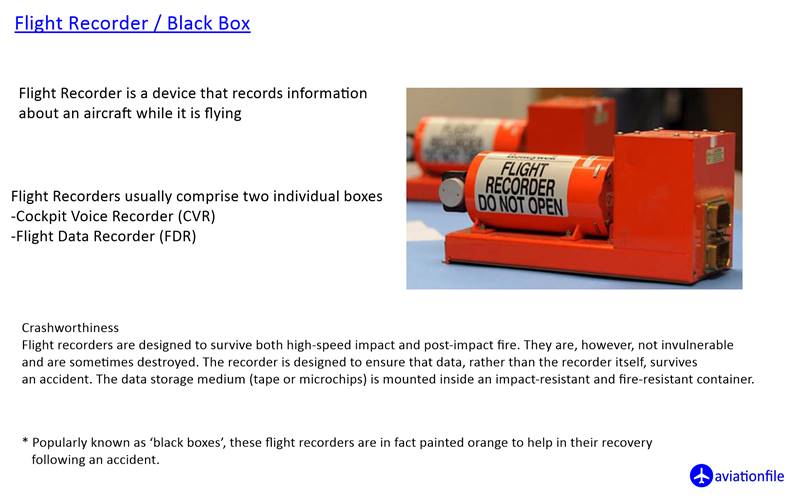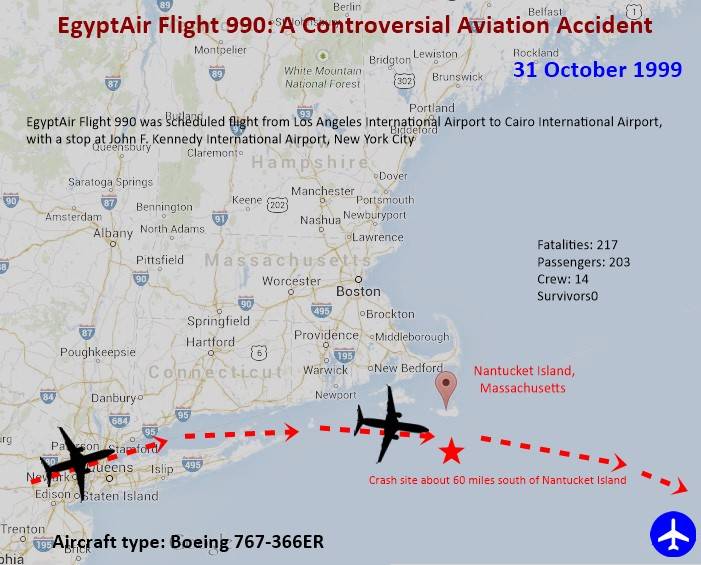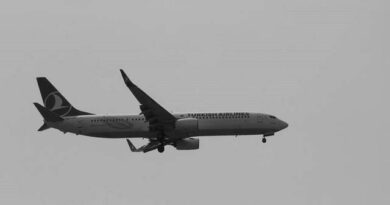EgyptAir Flight 990: A Controversial Aviation Accident
On October 31, 1999, EgyptAir Flight 990 crashed into the Atlantic Ocean about 60 miles (100 km) south of Nantucket, Massachusetts, killing all 217 people on board. The flight originated in Los Angeles and made a stop in New York City, after which it was to continue on to Cairo. The airplane, a Boeing 767-366ER, was in good condition and had no known mechanical problems.
The investigation into the crash was complex and controversial. The National Transportation Safety Board (NTSB) concluded that the probable cause of the crash was a deliberate act by the first officer, Gamil el-Batouti. The NTSB based its conclusion on the cockpit voice recorder (CVR), which revealed that el-Batouti had repeatedly turned off the plane’s autopilot and put the plane into a nosedive.

The Egyptian government, however, rejected the NTSB’s conclusion and insisted that the crash was caused by mechanical failure. Egypt pointed to the fact that the CVR recording was of poor quality and that it was possible that el-Batouti’s words had been misinterpreted.
The NTSB’s conclusion was also met with skepticism by some aviation experts. They argued that it was unlikely that el-Batouti would have been able to crash the plane without the captain’s knowledge. Additionally, they pointed to the fact that there was no evidence of any motive for el-Batouti to commit suicide or mass murder.
The controversy surrounding the crash of EgyptAir Flight 990 has never been fully resolved. The NTSB’s conclusion remains the official cause of the crash, but many people believe that the truth about what happened on that fateful night remains unknown.

Aircraft Details
The aircraft involved in EgyptAir Flight 990 was a Boeing 767-366ER, tail number SU-GAP. This model was a long-range wide-body airliner, equipped with Pratt & Whitney PW4000 engines. The plane had been in service since 1990 and had accumulated around 33,000 flight hours before the crash. It was configured with two flight crews—a standard practice for long-haul flights—to alternate duties during the flight (Encyclopedia Britannica, Wikipedia).
Further Information
In addition to the NTSB and Egyptian investigations, there have been several independent investigations into the crash of EgyptAir Flight 990. One of the most notable was conducted by former NTSB investigator Frank Ricci. Ricci concluded that the crash was caused by a mechanical failure, specifically a failure of the plane’s elevator control system.
Ricci’s conclusion has been disputed by the NTSB and other aviation experts. However, it has raised doubts about the NTSB’s official finding that the crash was caused by a deliberate act by the first officer.
The crash of EgyptAir Flight 990 remains one of the most controversial aviation accidents in modern history. The mystery surrounding what happened on that fateful night is likely to continue for many years to come.
Suspicions Surrounding Egyptian Military Personnel on Board
In the aftermath of the EgyptAir Flight 990 crash, the presence of 33 Egyptian military personnel, including high-ranking officers, fueled suspicions that the accident might have been caused by enemies of Egypt. This theory was bolstered by the sensitive nature of the passengers, who were returning from a training exercise in the United States. Speculation arose that the flight could have been targeted in a deliberate act of sabotage by hostile entities. These suspicions were further intensified by the secrecy surrounding the military personnel’s presence on the flight, as Egyptian media were reportedly censored from reporting on this aspect, leading to various conspiracy theories and further complicating the investigation (Encyclopedia Britannica, Wikipedia).
Image source:
By Aero Icarus from Zürich, Switzerland – Egypt Air Boeing 767-366ER; SU-GAP@ZRH, October 1999/ BZS, CC BY-SA 2.0, https://commons.wikimedia.org/w/index.php?curid=26695589


